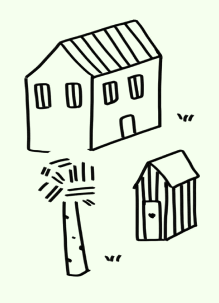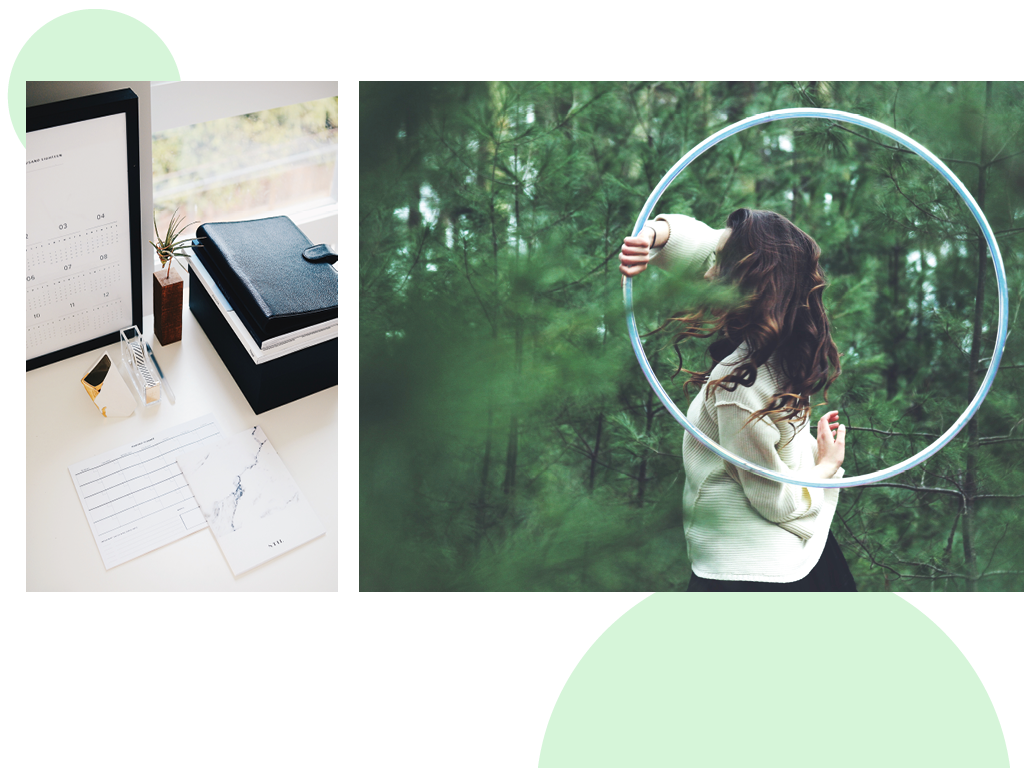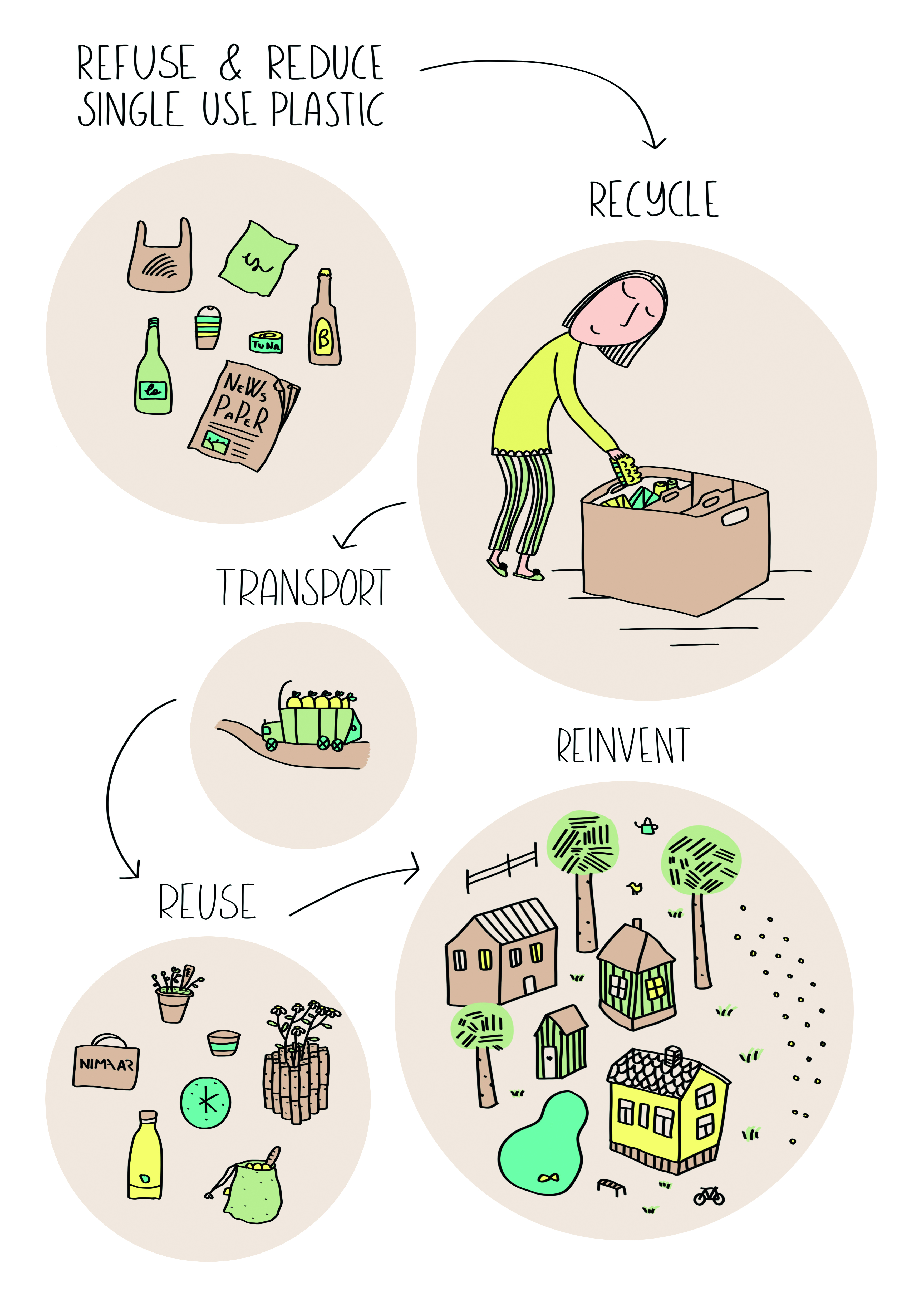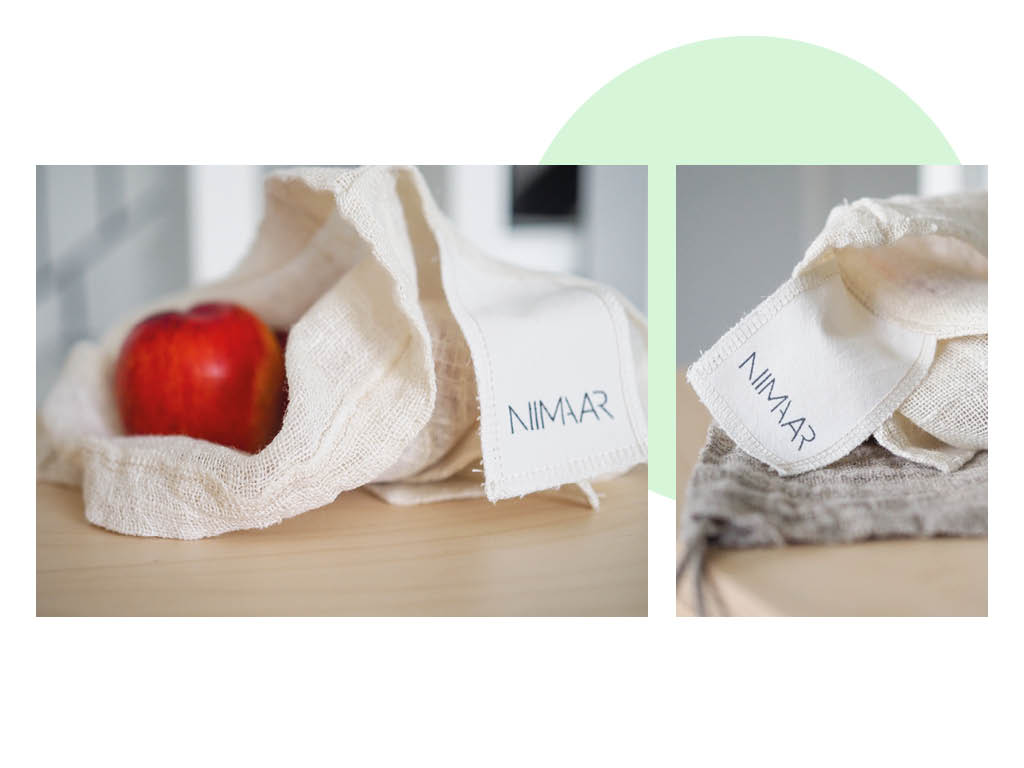
How can Circular Economy and design help?
The plastic material is durable and excellent for many uses: keeping food hygiene under control, easy to transport goods and is an inexpensive, sterile material in hospitals and keeping tubes clean in water supply. As mentioned, in consumer products, problematic plastics are eg. unnecessary disposable plastic items, microplastics in cosmetics, outdoor clothing coatings, tobacco filters and packaging: small plastic wrapping and shrink- ing edges of plastic packaging, packaging with mixed materials and colored plastic packaging. There is also plastic that can not be recycled at all like PVC. With what mechanisms can the commercial sector lead to change and the right direction?

Unlike a linear economy, resources in a circular economy are retained even when the product has reached the end of its service life. The aim is to design and manufacture the products in principle, so that they remain in use and run as long as possible. The loss of plastic to the environment is minimized, the degradation of the plastic into micro-plastic is prevented and the new products are produced from recycled materials. William McDonough, Cradle to Cradle (2002), pioneer in design development, describes how to design packaging, products, processes and systems that take into account the entire life cycle and material recyclability, durability, efficient water use, and the use of renewable energy sources. Thus, the biological components and technical parts of the product material can be reintroduced. According to Ellen MacArthur Foundation, the circular economy pioneer: Without innovation and bigger changes in product design, 30% of the current plastic can never be reused or recycled, 20% of the current plastic would be economically reutilized and 50% recycled through new innovative recycling mechanisms.

Circular economy would be able to respond to the micro-plastics challenge in the short term by best paying attention to replacing harmful material flows with the most disadvantageous material cycles. Recycling focuses on finding uses for waste that has already been generated. Generally in Europe, we are currently producing about 480 kg of waste per capita per year (source: EU Commission in 2016), in Finland 500kg per person per year and in Helsinki about 300 kg per person per year. In Finland, plastic recycling is advanced and, for example, the return rate of plastic bottles is high (92%), as in other Nordic countries. In 2016 Finland began to recycle plastic packaging separately and the apartment buildings could ask for plastic waste recycling containers from the city. The countries which recycle most according to Eunomia in Europe, according to the Environmental Consultant, Germany 56.1%, Austria 25.8%, Wales 52.2%, and Switzerland 49.7%. Zero Waste strategies include the Zero Waste Index, in which San Francisco City is one of the pioneers. San Francisco’s waste management manifestation includes “zero-waste”. The city not only recycles, but uses and reuses the material for example as energy, thus reducing and preventing the use of new materials.
It is important to develop new types of business models and solutions such as Benefit Corporation (companies whose mission is Sustainable Development), design products and materials for reuse, aim at high recycling rates, promote the reduction of waste through education and legislation, aim at reducing and eliminating packaging, and introducing innovative return systems. Consumers adopt new habits and Zero Waste lifestyles that help them change towards a more waste-free life and more meaningful consumer behavior, buy unpackaged products in Zero Waste stores.
_______
How to activate ourselves? How do users & business reduce plastic packaging? We are the enablers for change
How can we activate people to avoid disposable plastic, eg. disposable coffee cups, disposable plastic bottles and disposable plastic bags. It is much more ecological to use reusable coffee cups, bottles and durable bags. It is also important to be aware that a cotton bag should be used at least 131 times before its environmental footprint is below the disposable bags’ environmental footprint. The cultivation and treatment of non-organic cotton has a great impact on the environment. Similarly, a steel-made water bottle should be used 500 times before its environmental footprint is smaller than the PET plastic bottle’s. It is therefore important to carefully plan and communicate what new practices consumers should follow and what companies are going to put in place. (Source: https://www.newscientist.com/article/mg23831780-100-fixing-planet-plastic-how-well-really-solve-our-waste-problem/.)
From the point of view of social sustainability, we can introduce the Zero Waste lifestyle. Zero Waste is an intent for a waste-free life. This is a holistic way of life that aims at a more ethical, ecologic and healthier life. It includes topics such housing, mobility and consumer behavior. It is naturally not possible to have a completely wastefree life, hence in other words Zero Waste is a term that means an ecological way of life.
Partial or full Zero Waste lifestyle helps to reduce the use of plastic (for example, the plastic bag is only used for 15 minutes and then the plastic will go to the garbage or at its best, it is reused a few times or to recycled). Recycling is, of course, one alternative for disposable plastic, eg. packaging waste, but the aim should be reduce the overall disposable packaging waste. Can we use already produced and purchased packaging more than once?





